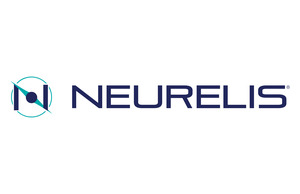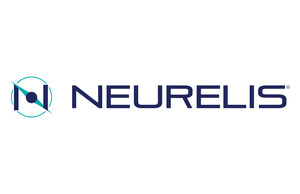- Novel clinical data highlights the potential for future research into additional benefits of rescue medications in treating individual seizure clusters
SAN DIEGO, Sept. 7, 2022 /PRNewswire/ -- Neurelis, Inc., announced the recent online publication of a novel data analysis, evaluating the time interval between seizure clusters, or SEIzure interVAL (SEIVAL) in Epilepsia that indicates a significant increase in time between seizure clusters treated with VALTOCO® (diazepam nasal spray) CIV. Epilepsia is the world's leading, peer-reviewed journal that publishes original scientific research on the multiple clinical and investigational aspects of epilepsy.
"The most exciting finding of the study is the robustness of the signal in the cluster-interval data," said co-author and Assistant Professor of Neurology at Harvard Medical School, Jurriaan Peters, MD. "The results consistently showed a clinical and statistical increase in the time between use of intranasal diazepam, VALTOCO, over time. This data highlights the potential for future research into additional benefits of rescue medications in treating individual seizure clusters."
VALTOCO, a nasal spray for the acute treatment of episodes of frequent seizure activity in adult and pediatric patients aged 6 and older, received orphan drug designation from the U.S. Food and Drug Administration (FDA) in 2020. The intermittent rescue therapy may be used for treating seizure clusters, which are emergencies when two or more seizures occur within 24 hours, and increase the risk of status epilepticus, emergency room visits, and reduced quality of life.
"Neurelis is deeply committed to improving the lives of people with epilepsy and we are particularly enthusiastic about the potential of these findings," said Neurelis CEO, Craig Chambliss. "Until now, no data existed on the impact of intermittent rescue therapy on the long-term course of seizure clusters, and these results may open important new avenues of research on timely, safe, and effective acute treatment application."
Of the 163 patients enrolled in the 12-month study, an increase in SEIVAL was noted from the first three months of the trial (Period 1) to all subsequent periods. A subset of patients from a 12-month safety study demonstrated the mean SEIVAL increased significantly, from 13.9 days in Period 1 (day 1-90) to 26.8 days in Period 4 (day 271-360), an average increase of 12.9 days between seizure clusters treated with VALTOCO.
Misra S., Sperling M, Rao V., et al. Significant Improvements in SEIzure InterVAL (Time Between Seizure Clusters) Across Time in Patients Treated With Diazepam Nasal Spray as Intermittent Rescue Therapy for Seizure Clusters. Epilepsia doi: https://doi.org/10.1111/epi.17385
Neurelis, Inc., is a commercial-stage neuroscience company focused on the development and commercialization of therapeutics for the treatment of epilepsy and orphan neurologic disorders characterized by high unmet medical need. In 2020, the FDA approved Neurelis' VALTOCO® (diazepam nasal spray) as an acute treatment of intermittent, stereotypic episodes of frequent seizure activity (i.e., seizure clusters, acute repetitive seizures) that are distinct from an individual's usual seizure pattern in adult and pediatric patients 6 years of age and older. VALTOCO is a proprietary formulation of diazepam incorporating the science of INTRAVAIL®. Intravail's transmucosal absorption enhancement technology enables the noninvasive delivery of a broad range of protein, peptide and small-molecule drugs. In its approval of VALTOCO, the U.S. Food and Drug Administration also granted Neurelis Orphan Drug Exclusivity and recognized VALTOCO's intranasal route of administration as a clinically superior contribution to patient care over the previously approved standard-of-care treatment (a rectal gel formulation of diazepam). For more information on VALTOCO, please visit http://www.valtoco.com/. In addition to VALTOCO, Neurelis is developing NRL-2 for intermittent use to control acute panic attacks, NRL-3 as a noninvasive acute therapy to stop seizures that have progressed to status epilepticus, and NRL-4 as a noninvasive rescue therapy to address the escalation of acute agitation symptoms associated with schizophrenia and bipolar 1 mania in adults. In addition, Neurelis is developing NRL-1049 (previously known as BA-1049), an investigational, pre-clinical stage small molecule Rho kinase (ROCK) inhibitor, for the treatment of cerebral cavernous malformations (CCMS), a rare disorder of the central nervous system (CNS). For more information on Neurelis, please visit http://www.neurelis.com/. For the latest scientific information on VALTOCO, please visit http://www.neurelismedicalaffairs.com/.
VALTOCO® (diazepam nasal spray) is indicated for the acute treatment of intermittent, stereotypic episodes of frequent seizure activity (i.e., seizure clusters, acute repetitive seizures) that are distinct from a patient's usual seizure pattern in patients with epilepsy 6 years of age and older.
WARNING: RISKS FROM CONCOMITANT USE WITH OPIOIDS; ABUSE, MISUSE, AND ADDICTION; and DEPENDENCE AND WITHDRAWAL REACTIONS
- Concomitant use of benzodiazepines and opioids may result in profound sedation, respiratory depression, coma, and death. Reserve concomitant prescribing of these drugs for patients for whom alternative treatment options are inadequate. Limit dosages and durations to the minimum required. Follow patients for signs and symptoms of respiratory depression and sedation.
- The use of benzodiazepines, including VALTOCO, exposes users to risks of abuse, misuse, and addiction, which can lead to overdose or death. Abuse and misuse of benzodiazepines commonly involve concomitant use of other medications, alcohol, and/or illicit substances, which is associated with an increased frequency of serious adverse outcomes. Before prescribing VALTOCO and throughout treatment, assess each patient's risk for abuse, misuse, and addiction.
- The continued use of benzodiazepines may lead to clinically significant physical dependence. The risks of dependence and withdrawal increase with longer treatment duration and higher daily dose. Although VALTOCO is indicated only for intermittent use, if used more frequently than recommended, abrupt discontinuation or rapid dosage reduction of VALTOCO may precipitate acute withdrawal reactions, which can be life-threatening. For patients using VALTOCO more frequently than recommended, to reduce the risk of withdrawal reactions, use a gradual taper to discontinue VALTOCO.
- Hypersensitivity to diazepam
- Acute narrow-angle glaucoma
Benzodiazepines, including VALTOCO, may produce CNS depression. Caution patients against engaging in hazardous activities requiring mental alertness, such as operating machinery, driving a motor vehicle, or riding a bicycle, until the effects of the drug, such as drowsiness, have subsided, and as their medical condition permits.
The potential for a synergistic CNS-depressant effect when VALTOCO is used with alcohol or other CNS depressants must be considered, and appropriate recommendations made to the patient and/or care partner.
Antiepileptic drugs (AEDs), including VALTOCO, increase the risk of suicidal ideation and behavior. Patients treated with any AED for any indication should be monitored for the emergence or worsening of depression, suicidal thoughts or behavior, and/or unusual changes in mood or behavior.
Benzodiazepines, including VALTOCO, can increase intraocular pressure in patients with glaucoma. VALTOCO may only be used in patients with open-angle glaucoma only if they are receiving appropriate therapy. VALTOCO is contraindicated in patients with narrow-angle glaucoma.
VALTOCO is not approved for use in neonates or infants. Serious and fatal adverse reactions, including "gasping syndrome," can occur in neonates and low-birth-weight infants treated with benzyl alcohol-preserved drugs, including VALTOCO. The "gasping syndrome" is characterized by central nervous system depression, metabolic acidosis, and gasping respirations. The minimum amount of benzyl alcohol at which serious adverse reactions may occur is not known.
The most common adverse reactions (at least 4%) were somnolence, headache, and nasal discomfort.
Diazepam, the active ingredient in VALTOCO, is a Schedule IV controlled substance.
To report SUSPECTED ADVERSE REACTIONS, contact Neurelis, Inc. at 1-866-696-3873 or FDA at 1-800-FDA-1088 (www.fda.gov/medwatch).
Please read full Prescribing Information, including Boxed Warning, for additional important safety information.
Contacts:
Neurelis:Brittany Bradrick, Chief Financial Officer, +1 858 251 2135
Media:
Erich Sandoval, Finn Partners, + 1 917 497 2867
SOURCE Neurelis, Inc.

WANT YOUR COMPANY'S NEWS FEATURED ON PRNEWSWIRE.COM?
Newsrooms &
Influencers
Digital Media
Outlets
Journalists
Opted In






Share this article